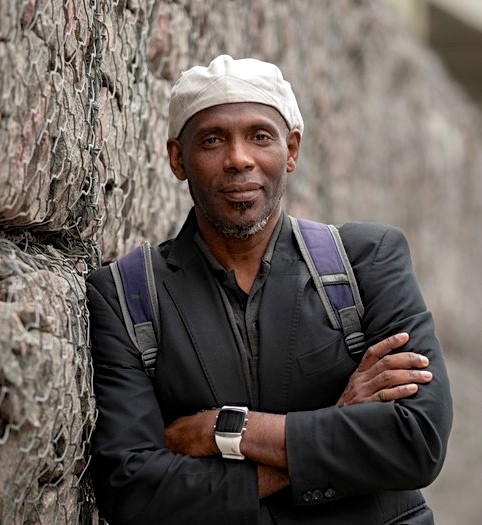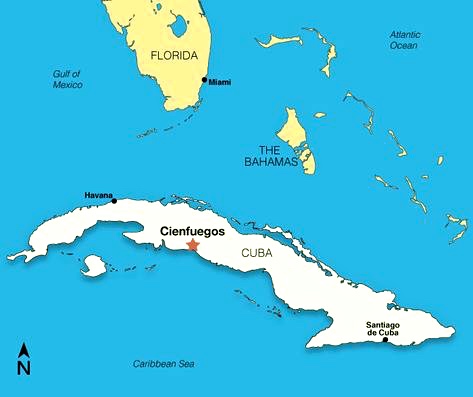“We were innocent back then, even if we already didn’t have a future. NO ONE GETS OUT OF THIS NEIGHBORHOOD ALIVE, someone had written on the side of a house, because the neighborhood was bad, really and truly bad. If you’re born black, you’re already screwed; imagine if, in addition, you have to live in squalid rooming houses of a neighborhood like this; and I’m a university graduate, a psychologist, and even have a master’s in business administration, you’d think I wouldn’t be so fucked.” – Alain Silva Acosta
Setting his novel in Pun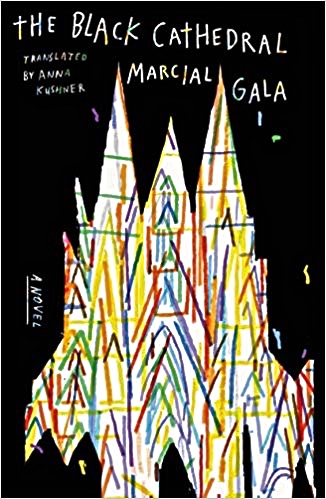 ta Gotica, the poorer side of Cienfuegos, a city on the south side of Cuba, author Marcial Gala, creates a grim novel of the non-stop action in this city, while, at the same time, breathing life into people, societies, and places new to many readers. Often the narrative feels as if Marcial Gala himself, a resident of this city, is “hanging out,” invisibly, with some of the characters here, even as he is telling their stories, and on several occasions one character even recommends that another character go see “Marcial” for some kind of help with an issue. As a result, the author creates the feeling that he is part of the action, living a personal story in Cienfuegos within the more objective stories of the main characters. Unconscionable, often life-changing difficulties, are drawn realistically, rather than intuitively or emotionally here, as his fellow-characters react to traumas they have experienced in their daily lives. Casual murder, innocent cannibalism, the betrayal of lovers for cash, and a general mood of prevailing evil, which even infects the ghosts of some of the dead, make this a novel in which anything can – and often does – take place without warning.
ta Gotica, the poorer side of Cienfuegos, a city on the south side of Cuba, author Marcial Gala, creates a grim novel of the non-stop action in this city, while, at the same time, breathing life into people, societies, and places new to many readers. Often the narrative feels as if Marcial Gala himself, a resident of this city, is “hanging out,” invisibly, with some of the characters here, even as he is telling their stories, and on several occasions one character even recommends that another character go see “Marcial” for some kind of help with an issue. As a result, the author creates the feeling that he is part of the action, living a personal story in Cienfuegos within the more objective stories of the main characters. Unconscionable, often life-changing difficulties, are drawn realistically, rather than intuitively or emotionally here, as his fellow-characters react to traumas they have experienced in their daily lives. Casual murder, innocent cannibalism, the betrayal of lovers for cash, and a general mood of prevailing evil, which even infects the ghosts of some of the dead, make this a novel in which anything can – and often does – take place without warning.
The events which serve as the basic framework for the novel begin with the arrival in Cienfuegos of the mysterious Arturo Stuart, his wife, and his family, two teenage sons and an older daughter. They have been living in Camaguey, but they offer no information about their pasts, giving no real background about what they have been doing there and why they have come to Cienfuegos. Arturo is a preacher of sorts, a Salvationist, and as he sets out to establish a congregation, he is also paving the way for the building of a cathedral, to be the biggest church ever seen in Cuba, “something that, in these times when everything is in decline, dares to rise up and say I’m here despite it all, look at me.” The pastor’s first days do not get off to a positive start in Cienfuegos, however. Arturo’s younger son, Prince, about eleven, is immediately labeled by other children as gay because he is reading a book in the middle of the day, and while the psychologist whose quotation opens this review didn’t see what happened afterward, he was contacted immediately for help: “Prince split open Lupe’s kid Barbaro’s head. He did it with a book, terrible, blood everywhere.” Another character, Guts, describes the attack as “a quick, skilled, and cunning blow, as if he’d practiced a lot. This dude has a future in the neighborhood,” Guts concludes. Barbaro’s mother swears vengeance, and the pastor denies his son could have done the deed, but he eventually pays the mother five hundred pesos to keep her quiet.
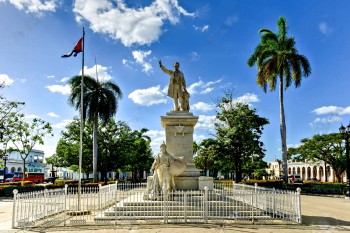
Cienfuegos was divided into two sections, Punta Gotica on the right side of Jose Marti Park, named for a man who dedicated his life to liberty and independence, and Punta Gorda, the more affluent part of the city.
The first murder takes place before the novel even reaches the twenty-page mark. One young thug, Gringo, says he “slashed [a stranger’s] neck and didn’t stop until his eyes were like a dead cow’s.” Then he and friends cut up the victim and take his money from a backpack, ten thousand pesos. They make additional money by butchering the body and selling the meat as steak. Gringo and his buddies now know that any time that they want more money, all they have to do is kill another “little cow” and “get more veal like that, the really tender kind,” the kind tourists want and will buy. They butcher two more people without delay. Dozens of characters get involved in the various kinds of evil which seems to be bubbling up from Cienfuegos, despite the emphasis on God by the Salvationists. One young woman, Berta, is even being courted by Aramis, a ghost. As the evil ones from Cienfuegos continue to spread in many directions outside Cuba, some of them continue to kill, others fall in love and marry (when it is convenient), and many remain on the dark side, committing serious crimes and additional murders, the “go-to” solution whenever some of these sadists get bored, frightened, or need money. Only a few find success in a variety of occupations from writing to painting.
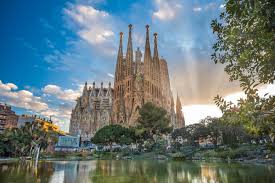
The Basilica de Sagrada Familia, designed by Antoni Gaudi, was begun in Barcelona in 1882, and is still unfinished. One character from Cienfuegos used to go to see this cathedral in Barcelona in remembrance of the cathedral in Cienfuegos.
No matter how far these people travel or what they do, however, they never seem to escape the essence of Cienfuegos. Flashforwarded scenes show that Gringo, who becomes a major character, ends up in Portland, Oregon; Louisville, Kentucky; and later Texas, while Guts is in Barcelona. Though day-by-day scenes say little about the building of the temple in Cienfuegos, it is supposedly being built, slowly, in an effort to create the New Jerusalem. The size of Arturo’s congregation continues to get bigger, eventually reaching twenty thousand Salvationists, but the building of the church makes little to no progress. The godly life as a theme is almost ignored here, and the whole idea of sin and redemption, which would seem to be a logical choice for development on some level, considering the horrific crimes which some main characters commit, is virtually ignored. Sins are committed, but no redemption is sought. Life is superficial and sensual, with characters concentrating on the pleasures of the moment.
Author Marcial Gala, immensely talented and with seemingly unlimited energy, is also an author who seems to enjoy scenes of the instant, the moment, and the dramatic. Few long scenes exist, and many characters are introduced then disappear from the narrative. Much of the dark action feels satirical, but the brief depiction of Americans in the United States by Gringo, which could have found a place in a satire in which so many Cuban characters escape to the US, is dropped shortly after it is introduced. Themes start to appear but fall away as a new scene with a new crisis introduces another idea. A grand finale of horror ties the sad, cynical conclusion to the lives of killers and a writer’s vision of the passage of time, when “all of Cuba is underwater,” and nothing remains of the cathedral. “When everything dries up and nothing remains, and the extraterrestrial voyagers find it, how will they know that this cathedral was never finished? They will think that it was once the main temple of a city of happy beings and that the parishioners’ children once ran down its aisles, and over the course of time, will it matter that it wasn’t like that?”
Photos. The author’s photo by Nestor Garcia, appears on https://www.clarin.com/
Cienfuegos was divided into two sections, Punta Gotica on the right side of Jose Marti Park, named for a man who dedicated his life to liberty and independence, and Punta Gorda, the more affluent part of the city. https://www.123rf.com
The Basilica de Sagrada Familia, designed by Antoni Gaudi, was begun in Barcelona in 1882, and is still unfinished. One character from Cienfuegos used to go to see this cathedral in Barcelona in remembrance of the cathedral in Cienfuegos. https://news.artnet.com/
The map of Cuba may be found on https://www.pinterest.ru/
